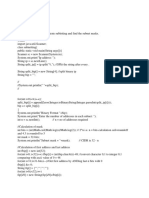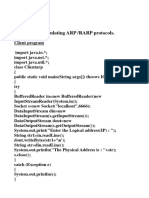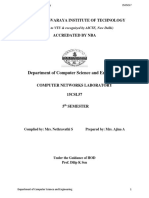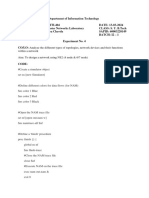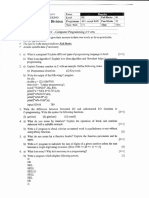0% found this document useful (0 votes)
116 views11 pagesNS2 Lab2
The document describes a program to simulate subnetting and find subnet masks. It provides the objective, concepts, algorithm, required tools, sample code, and sample output of the program. The program takes an IP address as input, converts it to binary, calculates the subnet mask and number of addresses based on user input, and finds the first and last addresses in the subnet block. It implements the concepts of subnetting to divide IP addresses and route traffic within a network.
Uploaded by
Tech Talk Paper PresentationCopyright
© © All Rights Reserved
We take content rights seriously. If you suspect this is your content, claim it here.
Available Formats
Download as DOCX, PDF, TXT or read online on Scribd
0% found this document useful (0 votes)
116 views11 pagesNS2 Lab2
The document describes a program to simulate subnetting and find subnet masks. It provides the objective, concepts, algorithm, required tools, sample code, and sample output of the program. The program takes an IP address as input, converts it to binary, calculates the subnet mask and number of addresses based on user input, and finds the first and last addresses in the subnet block. It implements the concepts of subnetting to divide IP addresses and route traffic within a network.
Uploaded by
Tech Talk Paper PresentationCopyright
© © All Rights Reserved
We take content rights seriously. If you suspect this is your content, claim it here.
Available Formats
Download as DOCX, PDF, TXT or read online on Scribd
/ 11



